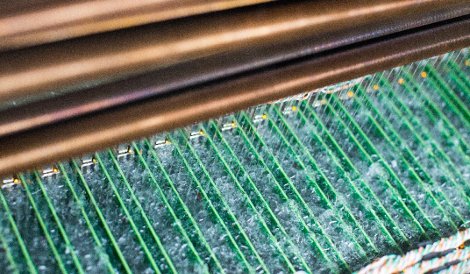Immersion cooling, where servers are submerged into liquid as a much more efficient alternative to air conditioning, played a big role at this week’s SC13 supercomputing conference in Denver, Colorado.
The latest Green500 list of the world’s most energy efficient data centers was announced Thursday and the system at the top of the list is cooled by immersion cooling. Also, 3M and a Hong Kong data center designer showcased a facility they built for a client that used 3M’s immersion cooling technology and saved a lot of space and money.
The supercomputer that topped this November’s Green500 list is the Tsumabe-KFC system built at the Tokyo Institute of Technology. The supercomputer is cooled by the immersion-cooling solution by Austin, Texas-based Green Revolution Cooling.
Tsumabe-KFC only needs one watt to crunch through 4.5 gigaflops. The “flops” in gigaflops stands for Floating Operations Per Second – the standard measure of performance in the world of scientific computing.
It is a heterogeneous system, meaning it combines CPUs and GPUs (Graphic Processing Units). Tsumabe-KFC uses Intel’s Ivy Bridge processors as CPUs and Kepler GPUs by NVIDIA. In fact, all 10 of the top supercomputers on the latest Green500 list use this combination of processors.
Green Revolution’s system is called CarnoJet. A basic CarnoJet unit is a four-rack tank filled with dielectric coolant and a pump module.
Unlike regular data center racks that stand upright on a data center floor, these racks lay on their backs, and servers are slid into place from the top down.
Immersion cooling shrinks Hong Kong data center tenfold
Hong Kong-based Allied Control built a 500kW data center for an unnamed client using 3M’s “passive two-phase liquid immersion cooling system” to hold and cool the IT equipment. Two-phase immersion cooling systems have been commonplace in electrical transformers and inverters, as well as supercomputers for decades, Phil Tuma, a thermal application engineer at 3M wrote in an earlier article for FOCUS.
It is an evaporative cooling system, where 3M’s Novec Engineered Fluid (a dielectric coolant liquid) boils on contact with hot surfaces, the vapor rises to a coil that collects it, after which it is cooled by water or delivered to an outside cooling tower where the heat is passed to outside air, Tuma explained.
Unlike the common design of such cooling systems, where the liquid and the equipment are held in vacuum in air-tight chambers, 3M’s system is an “open bath”. It works under atmospheric pressure and servers can be taken in and out of the cabinets.
Because there are fewer components than in a traditional sealed and vacuumed system, the approach enables the solution to be deployed at scale, since it is much cheaper, according to 3M.
Allied customer’s data center not only saved on chillers, air conditioners and the cost to run them, but also on the building itself. Because of the high density immersion cooling enables, the IT gear took up 10 times less space than it would have had it been installed on a traditional raised floor, 3M said.
The 500kW data center fits into a standard shipping container and sits in a high rise building in Hong Kong.
Kar-Wing Lau, VP of operations at Allied, said the elegance of the technology demonstrated its potential to become a future industry standard. “There’s no denying that immersion cooling will play an important role in the future, and that it has great potential for growth.”
The technology also has the potential to transform the way hardware is designed and lower its cost. Since liquid cools objects of any shape, there is no need to design different heat sinks or fans for different types of hardware.

